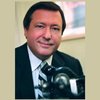Five Hard Steps to AM Radio Growth

In 1970, only 10% of Americans cumed the FM band. By 1978, 50% of all radio listening was via FM. In 1983, FM became standard issue in all US built automobiles. How the FM band rapidly grew its appeal reveals a strategy that could work to recharge interest in AM band listening.
FM radio grew because the band offered compelling, subversive programming. By 1970, AM stations had stopped experimenting, stopped questioning their own methods because they were minting money. Don’t risk that bottom line, buddy.
FM stations, in 1970, were losing money and had little audience. There was nothing to risk. Owners of AM/FMs suffered from an arrogance regarding FM. They believed that FM didn’t really count, FM wasn’t really radio. The National Association of Broadcasters didn’t recognize FM.
Corporate FM owners let kids like Allen Shaw at ABC, Randy Michaels at Taft, Jerry Lyman at RKO, B. Mitchel Reed at Metromedia and my team at NBC do whatever we wanted to do. No, really we did whatever we wanted to do. We asked forgiveness (sometimes) but not permission. Our toughest challenge: Convincing AM radio talent to come to the FM band. (Other owners took an odder route: They “solved” the FM problem by selling them off in the 1980s. Group W, for example sold WBZ FM -- now MAGIC -- for $4M. That’s correct. And KDKA FM for pennies. RKO sold KFRC FM and WHBQ FM in the early 70s, again, for pennies.)
Today AM stations are losing money, have diminishing audience and have nothing to risk except by doing nothing. Doing nothing is a significant risk.
Five Hard Steps to an AM Radio Turn Around:
1. Understand Why AM Radio Cume Spikes During Sporting Event Broadcasts.
The key word in that phrase is not “sporting” but rather “event.” The AM band can grow cume today. Every time a major league team plays baseball on an AM station the cume increases. This phenomenon has been incorrectly interpreted as “Sports Play By Play” is the AM answer. It is one answer. Compelling events like a Major League Baseball game are key strategic elements to AM success.
The AM opportunity for growth comes from broadening the definition of "compelling events."Mirror what the audience does: High school reunions, weddings, proms, intramural sports, bowling tournaments, beach parties, block parties.
2. Continue to Starve the AM Financially.
Money is not going to grow an AM station. Initially, successful FM radio shows were produced in church basements, house trailers and storage rooms. All that matters is what’s on the air. AM will grow from creative, passion filled content. When a station is “dead” life does not spring from the poison that killed it.
Put this challenge to your staff: Do whatever you want with the AM.
It is noteworthy that the early, major FM format innovation -- progressive free form rock -- was created by AM stars such as Tom Donahue, B. Mitchel Reed, Murray the K and Jerry Stevens. At the time they were over 40 years of age and at the top of their earnings. They knew how to make radio and which rules to break; they had put in their 10,000 hours. Those radio legends combined their skills with the open mindedness of fresh-out-of school talent to produce stunning, disruptive, fun radio.
The formula for AM success is: Proven radio stars plus fresh out of school radio rookies minus rules. But if that doesn’t work, try something else.
3. Enlist Cume Makers.
In our society there are consumers labelled “innovators” and “early adopters.” These groups of people try new radio programs first. They are opinion leaders. After you identify the people who are first wave listeners, get them involved with your station. Put them on the air, give them shows, build promotions for them. Put them to “work” to talk about your station.
Hint: Top 40 radio was built by high school student requests and dedications. Early Top 40’s featured high school student reporters on the air every night sharing news from area high schools. Those stations were the talk of the school every day.
4. Reverse the Day.
The best daypart for sampling and experimentation is overnight. You may be surprised that many FM stations invested in overnights first, morning drive last. (Dick Summer was the first radio star hired by WYNY FM New York in 1978. He was the overnight host. Fabled talk show host Alex Bennett was a very early hire on WPLJ New York. He did overnights.) Morning drive listening is the most habitual and therefore the hardest from which to share cume.
As company after company has relegated their FM overnight programming to sterile automated nothingness, AMs have been handed an opportunity to offer live, subversive, dangerous, interesting unpredictable programming that will win attention and cume.
5. Embrace Pop Up Programming.
Nielson’s Portable People Meter (PPM) allows radio to be measured electronically in real time. The diary ratings method necessitates that programming be consistent 24/7 in order for listeners to remember the station. Not so in a PPM market. In PPM, short term programming and special events coverage can be measured and sold for guaranteed rates. Disrupting the “format” is not destructive. It may be essential.
Warning: Innovation requires embracing change at all levels. Challenge assumptions, question every tactic. Do not question the need for innovation. Innovation is needed right now, just look at the current ratings trends of almost every single AM in the US. If there are doubters in the room, the lack of oxygen will continue to be fatal.
AM signals are valuable parts of the microwave spectrum. John Malone did not pay $500,000,000 for 49% of SiriusXM Radio. He paid $500,000,000 for the microwave spectrum. If AMs fail to continue to be viable, at some point Congress will want them returned for other spectrum use. Congress may know how to make a spectacle, but they aren’t good at making a show.
Go make a show.
The opinions and points of view expressed in this commentary are exclusively the views of the author and do not necessarily represent the views of MediaVillage management or associated bloggers.


